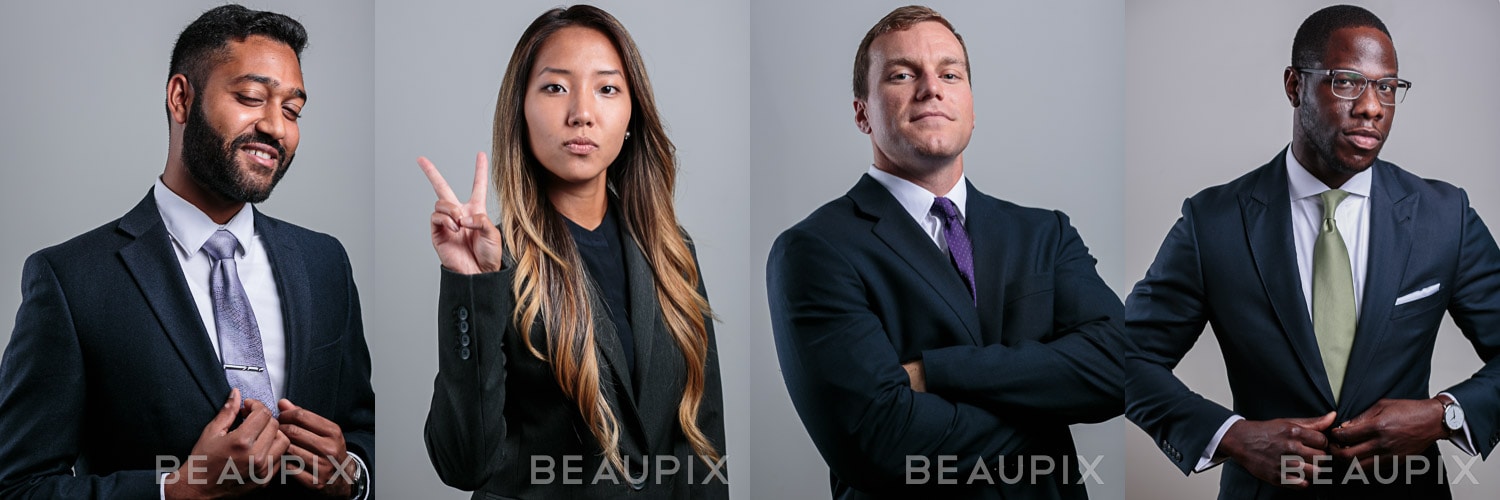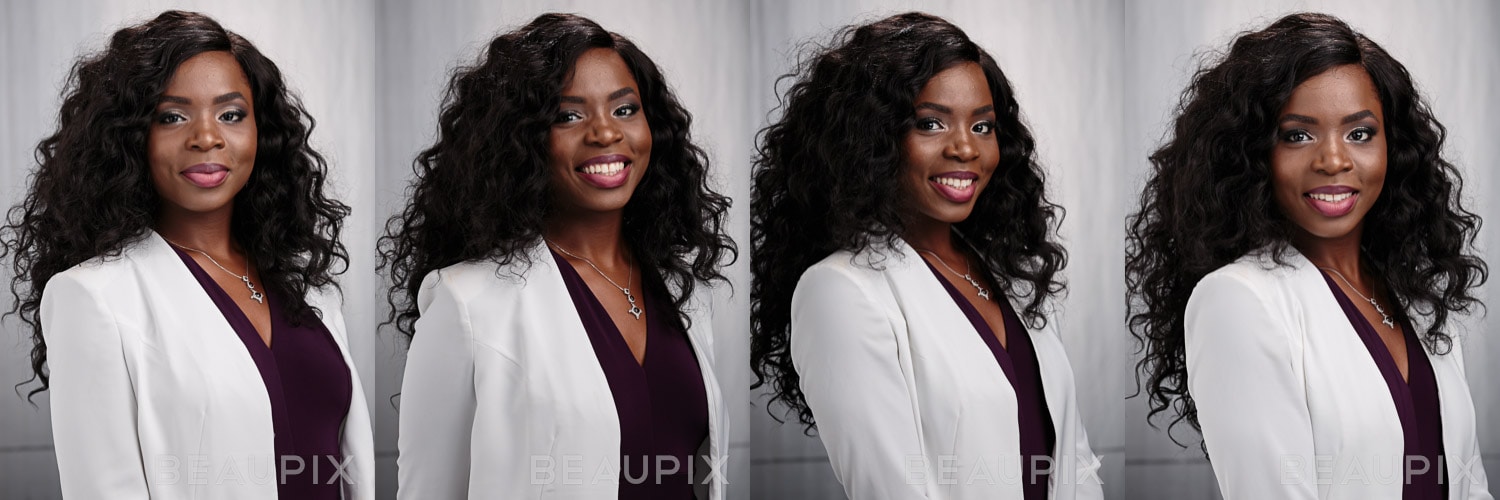Many career experts write fine guidelines for your headshot (examples are here, here and here) but do not stop thinking there. Those articles generally tell you to avoid several bad examples, and give good generic suggestions. I write this page from a different perspective, for people who know better than mediocrity, to advocate using a headshot as an offensive tool by making it a compelling evidence of your determined career objective.
Those “standard” guidelines tell you to get a professional, clean-cut headshot of decent quality, with your head straight upright and show a pleasant facial expression. These are all valid points. However, if they are all that’s needed for success, you might want to stop reading this, call your nearest and cheapest headshot factory (not us), and be done.
A successful headshot should be your “forward-looking statement.” You should look as if an already successful business person in the company, and without trying too hard. This way, the picture already proves that you understand the business of your future employer, and you are well prepared for it. You might think this is a bit too shallow, and you might hope that your future employer would understand it, but any other picture will raise a question of whether you are a good match, and ready to work. Keep in mind, people are incredibly judgmental, especially when they are doing the job under time and resource pressure.
What works the best depends on the industry, the company, the position, and what you think are the limiting factors. For example, a director of operations and a director of client relations need different pictures. An IT engineer who wants to work for a major commercial bank needs a different picture than for a tech startup. Many people think about these variables like with or without a tie, with or without a jacket, with or without a smile, etc. Those factors are important, but the facial expression alone is much deeper than they might have thought. In the above panel, you see four headshots of the same woman in the same outfit, same backdrop and same lighting. Who do you think gets hired first? Who will earn the most money? When thinking about these questions, what do you look for? That is exactly what you should think when you shoot your headshot, and that is a part of the process when shooting headshots at BEAUPIX.
Now, in the same set of headshots, which woman do you want to be a friend? Which woman is the funniest person? Who is most popular among people her age? As you look for different qualities in the headshots, you realize that the “best picture” depends a lot on what your goal is. Doing what helps your goal is the textbook definition of being a goal-oriented professional; the same principle applies to photography. That is why we separate job-related pictures from personal portraits and creative work.
Many people wish to get hired for being cool and stylish, but in reality, they are hired because the companies want them to go through a tall pile of work, even if the company is a tech startup. So, mixing personal preference and the career objective in a headshot is a bad idea. In the above set, there is only one headshot I recommend for her LinkedIn profile although I like all four of them for different reasons.
If you recognize your headshot as a career tool, the best return on investment will come from optimizing the headshot for your next dream job. That maximizes the likelihood of getting the best possible job and as fast as you can. In fact, if you get your next job days earlier than you would without a headshot, the extra days in the first paycheck may be many times the cost of your headshot.
Once you get your dream job, you can always book another photoshoot, this time for your personal pictures that make you feel good, without hurting your career opportunity at all. Don’t mix two objectives in one picture, because that is a compromise.
Don’t worry, these people below all have their proper, uncompromised professional headshots.

